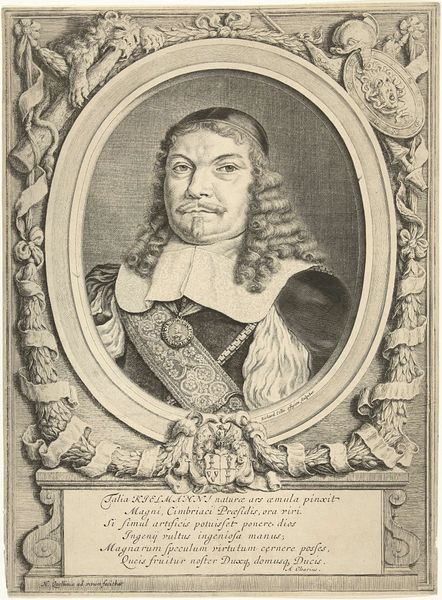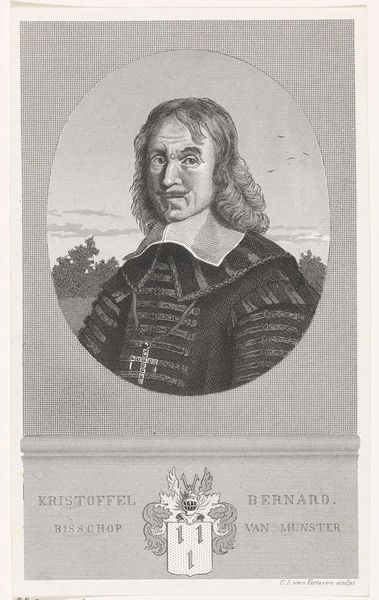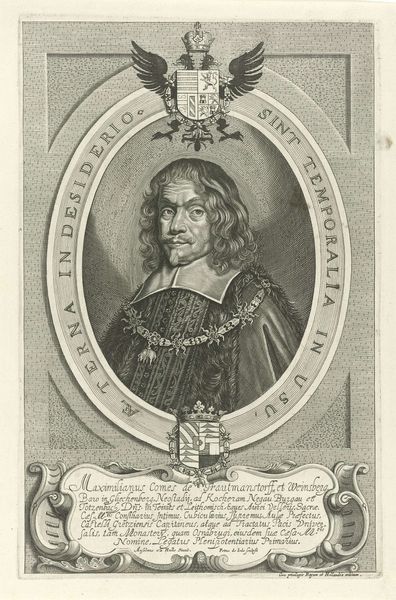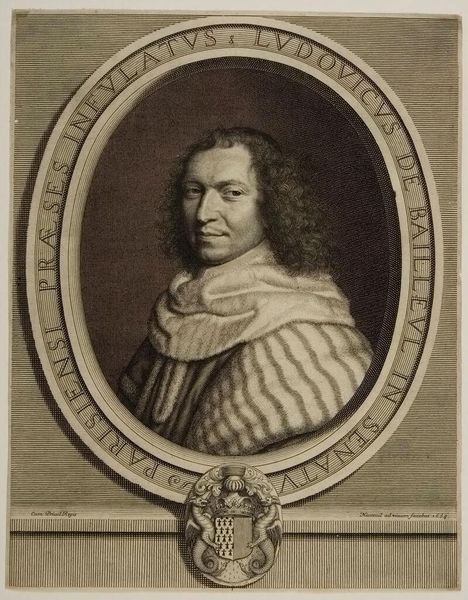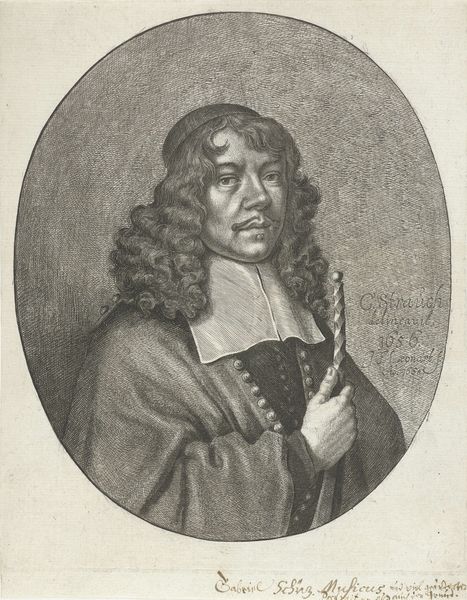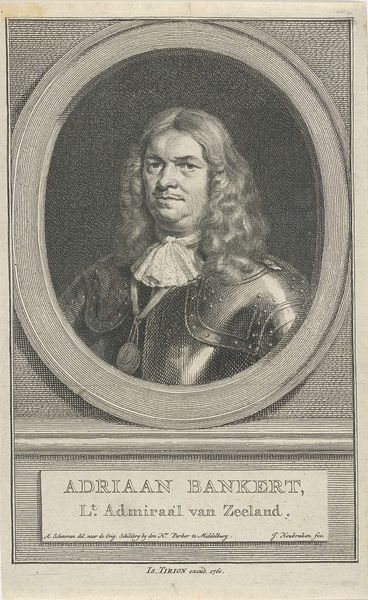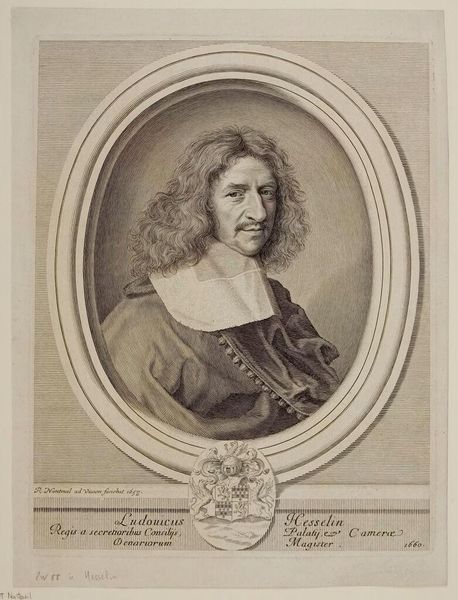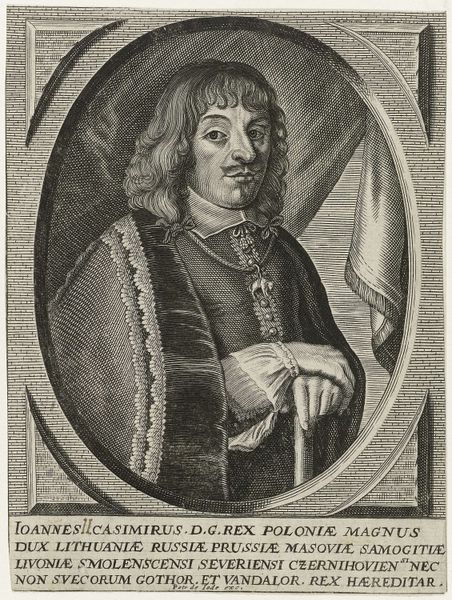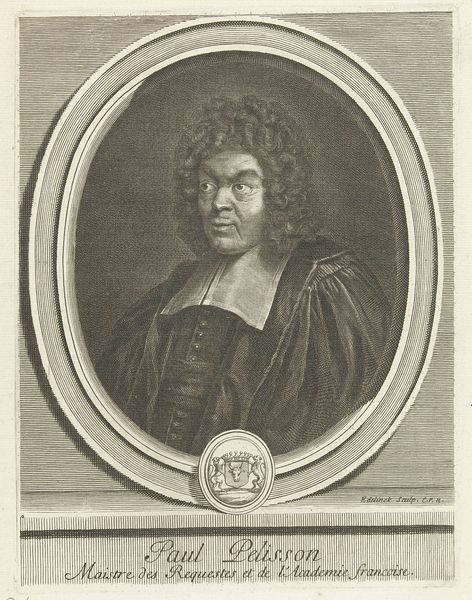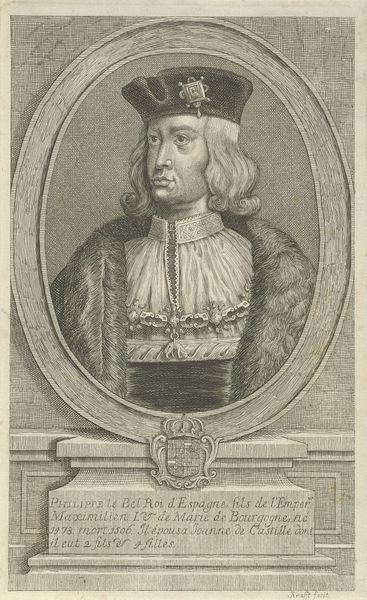
engraving
#
portrait
#
baroque
#
engraving
Dimensions: height 342 mm, width 250 mm
Copyright: Rijks Museum: Open Domain
Curator: This portrait, housed here at the Rijksmuseum, depicts Johann Adolph Kielmann von Kielmannsegg. Richard Collin created this Baroque-style engraving sometime between 1670 and 1694. What are your first thoughts? Editor: Stark. Austere. Despite the flourishes in dress, there is something immensely serious, even somber, about his gaze. The weight of rank, perhaps, but also of something unspoken. Curator: The oval frame itself acts as a symbolic echo chamber, isolating and elevating him. The meticulous detail given to his hair, lace collar, and the intricate sash speak volumes. What hidden meanings or cultural references do you decipher here? Editor: That sash! Notice the circular medallion positioned at the subject's chest—it reads as a direct claim of authority. I see the seeds of elitism taking root. There's such careful presentation of wealth and power meant to exclude common folk from even imagining they could achieve something like this. Curator: But is it purely about exclusion? Symbols of power can also convey responsibility, duty, obligation. The very act of commissioning and displaying such a portrait was itself a symbol. It said, "I am a steward of my time, my lineage, my position." Perhaps also intended to evoke qualities considered admirable within their context. Editor: Or perhaps a tool to actively shape his image and quell resistance. To be fair, looking at that ruffled collar alone would require no small amount of labour to produce, care for, wear, and maintain its crisp whiteness! Curator: A reminder of hierarchy encoded within everyday attire! The Baroque loved such opulent displays to suggest not only wealth but a particular, cultivated taste, one which projected power outwards through highly ritualised forms of dress. Editor: But rituals serve very particular social structures. In a period of great social upheaval and nascent ideas around equality, these elaborate symbols were also targets for critiques of power imbalances and the excesses of aristocracy. Curator: An image brimming with multilayered interpretations, reflecting the complex societal landscape of the Baroque period and its aftermath. A portrait is never just a likeness. Editor: Precisely. And now, centuries later, we're still unpacking its power and privilege. The image invites a wider dialogue on what portraiture really communicates beyond mere appearances.
Comments
No comments
Be the first to comment and join the conversation on the ultimate creative platform.
